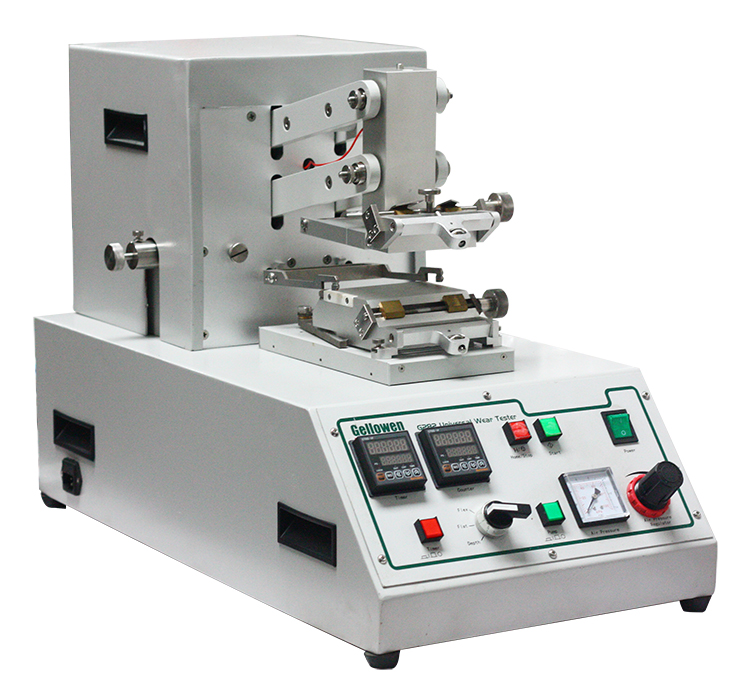Universal Abrasion Resistance Tester:
How It Works
The tester employs rotating or reciprocating motion to subject materials to controlled abrasion. Key features include:
- Adjustable Parameters: Speed (up to 1,500 rpm), load pressure (1–50 N), and abrasive types (e.g., sandpaper, rubber wheels, or steel brushes).
- Specimen Clamping: Materials are secured in a holder, ensuring uniform contact with the abrasive surface.
- Measurement: The number of cycles required to achieve visible wear, such as coating removal or fiber breakage, determines the material’s durability rating.
Compliance with standards like ASTM D4060, ISO 5470-2, and Taber Abrasion Test Methods ensures globally recognized results. Advanced models integrate digital counters, automated shut-off functions, and 3D imaging for real-time wear analysis.
Applications Across Industries
- Textiles and Apparel: Tests the abrasion resistance of fabrics used in denim, upholstery, and protective gear, ensuring compliance with safety norms like EN ISO 12947.
- Automotive Interiors: Evaluates leather, plastic, and coated materials for car seats, dashboards, and steering wheels to withstand long-term friction.
- Footwear Manufacturing: Assesses sole and upper material durability, aligning with SATRA TM31 standards.
- Coatings and Paints: Measures the scratch resistance of industrial coatings, aiding in R&D for anti-scratch finishes.
- Packaging Industry: Validates the durability of labels, films, and laminates under transport-related stress.

Market Trends and Future Innovations
As industries prioritize sustainability and cost-efficiency, the Universal Abrasion Resistance Tester has become pivotal for reducing material waste and enhancing product lifespans. Manufacturers like Taber Industries and ZwickRoell now offer cutting-edge models with features like AI-driven predictive modeling to forecast material longevity and IoT connectivity for remote monitoring.
The rise of eco-friendly materials—such as recycled polymers and bio-based coatings—is driving new testing methodologies. Future machines may incorporate cloud-based data analytics and robotic automation to streamline workflows for global testing labs.
In conclusion, the Universal Abrasion Resistance Tester is a cornerstone of material science, bridging innovation and practicality. By investing in this technology, businesses not only meet regulatory standards but also gain a competitive edge in an era of heightened quality expectations. For manufacturers seeking to optimize durability and sustainability, this machine remains an indispensable asset.

